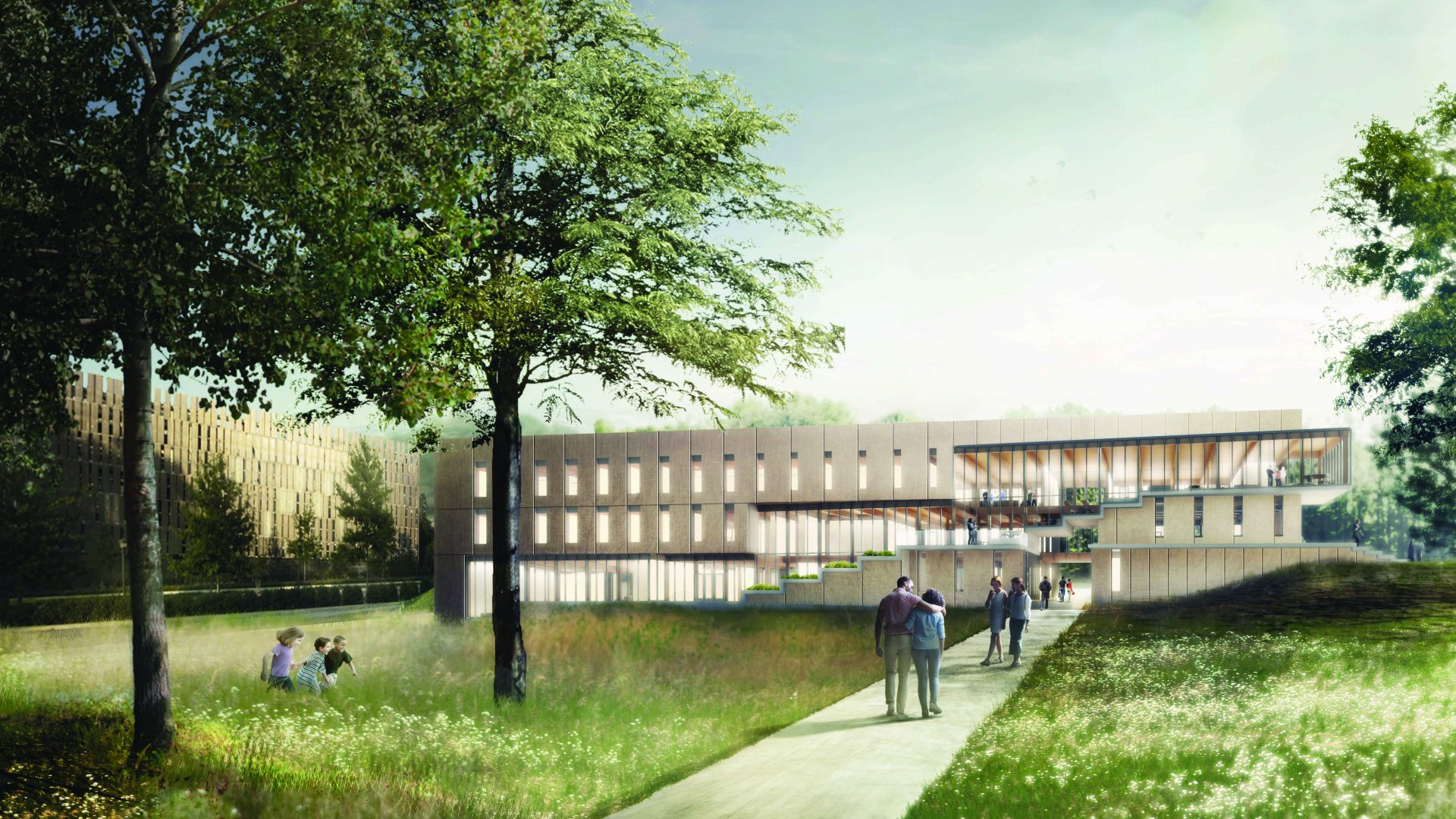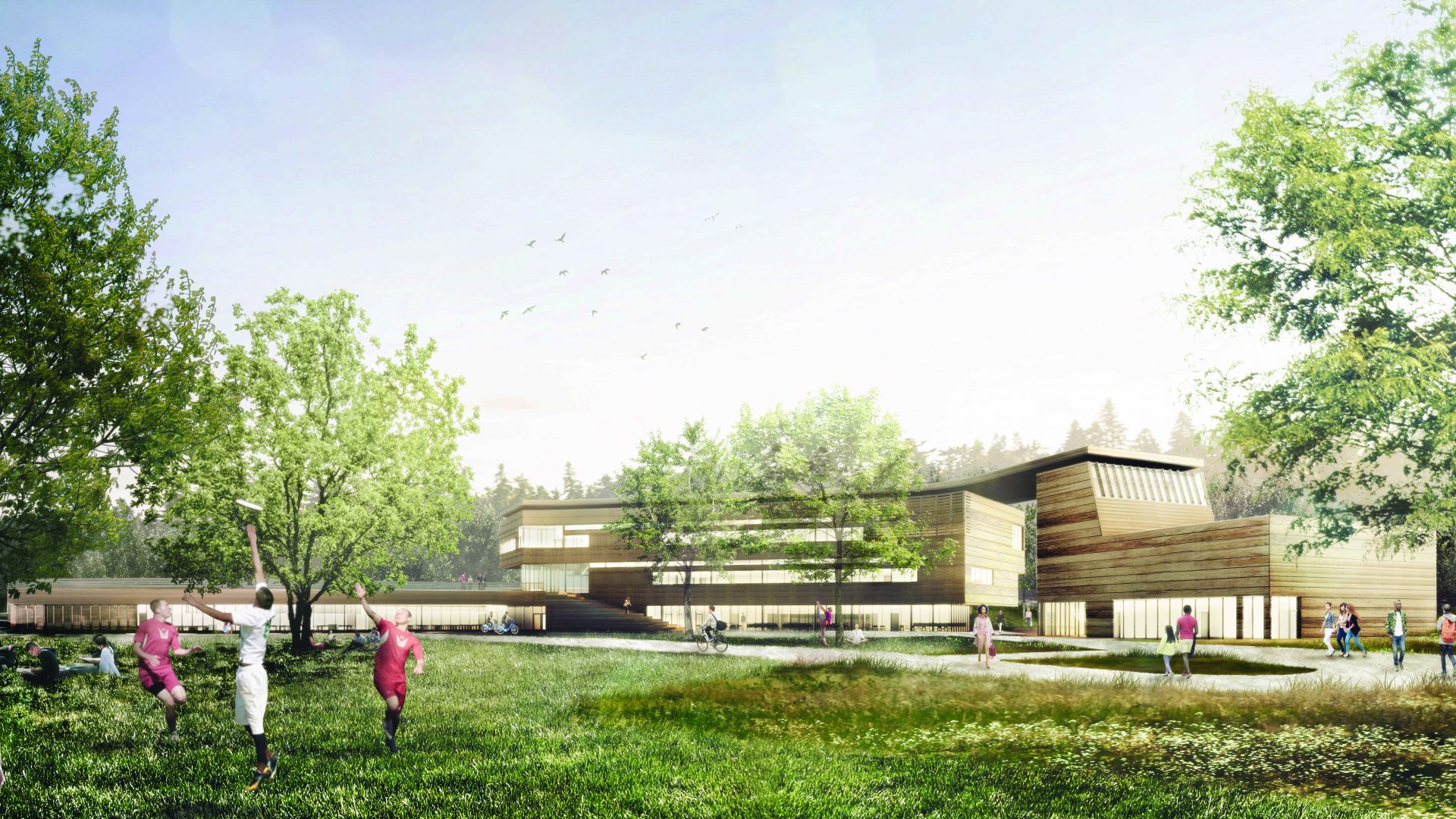Don’t take turns: The push for more organic collaboration
What we learned as it relates to the Georgia Tech Living Building Ideas Competition
Georgia Institute of Technology
The small child is in the sandbox playing with a yellow truck, making voluminous sand mountains to traverse as he digs the wheels in and emits a loud ‘Vrooom!’ that echoes across the playground. Another child steps into view, eyes sparkling as he sizes up the yellow truck. Enter a nearby parent who, sensing conflict, quickly jumps in to stop the argument before it even starts. “Take turns!” the parent says.
This exclamation echoes daily from our childhood subconscious as our societies enforce these rules for order, fairness, and equity in how we interact and treat one another. From the orderly lines at water fountains, traffic lights, and deli counters, to the e-mail correspondences and conversation in the professional world, we are compelled (and many times required) to take and then wait our turns.
Architectural design teams structure their communication similar to these societal rules. Typically, architects develop initial design concepts, and engineers are given their ‘turn’ to fit appropriate systems into the existing concept. Input is then transferred back to the architects for another ‘turn’ to be taken. Why is it that the ceiling design is developed, and then the lighting is designed and engineered? Why is building orientation and exterior materials determined first, and then an energy model is begun? This method of building design tends to cause incohesive habits in an otherwise collaborative team, isolating processes that should be working together in unison.
How do we fuse these integral pieces back together in a way that is truly collaborative in every sense of the word?
Collins Cooper Carusi recently had the opportunity to compete in a Living Building ideas competition at The Georgia Institute of Technology, where the unique project parameters challenged everyone involved to adopt new ways in which we collaborate…
upending the rules as we know them.
Created in the mid 1990’s by the International Living Futures Council, the Living Building Challenge (LBC) upholds rigorous building performance standards, aiming to create sustainable buildings that improve, heal and restore the environment, instead of making things “less bad.”
Compiling a team of at least 32 design and engineering professionals across ten different disciplines and five different states, a host of equal partners were brought to the table to share their specialized knowledge, elevating the team’s approach to sustainability and creating a more fluid, cross-disciplinary conversation. It was apparent that the team was no longer a body of individuals “taking turns”, but a collective team playing collaboratively together as one entity to make informed decisions to reach a shared goal: to create something that is restorative, transformative, and replicable.
In the spirit of collaborative equity, the team worked primarily in charette format using real-time data to make decisions efficiently. For example: having the cost estimator and the sustainable building consultant working in concert with the structural engineer allows things like carbon footprint effects and budget implications to be realized in real time when making decisions on building structure.

This type of fluid, organic collaboration sounds obviously ideal for almost any project, but the reality is much more messy. There can be a dizzying, constant flow of ideas in overwhelming quantities that cause tension and paralyze progress, putting the team at risk of losing sight of the greater goal. Learning to filter and document the progress of ideas and solutions allowed our team to become a well-oiled machine, efficiently considering, analyzing and ultimately vetting ideas as they related to the greater goals of the project. Continuing to keep these goals at the forefront of our process helped the team constantly ground the imperatives and central objectives throughout multiple rounds of what we consider a true democratic collaboration.
Collaborative equity within the team was paramount, and old habits were traded in for new ones that further prioritized the forward movement of ideas. In general, this type of collaborative process isn’t necessarily a guaranteed recipe for success on every project, but the ambitious nature of the LBC revealed a glimpse of what will be a new dimension of collaboration for sustainable architecture, where the earliest communication leads to more sensitive and integrative solutions. Engaging even the non-architects on our team in things like beauty and aesthetics began to inform greater meaning to our design solutions and continued to mold and reconfigure the term ‘collaboration’ in an even more inspiring way.

Image courtesy: Eskew+Dumez+Ripple
It’s not that taking turns is a flawed idea – in fact, it provides a level of necessary order for society and businesses to move forward successfully. Two kids and one yellow truck is a natural recipe for conflict and turmoil, and the innovative and creative solutions desired when solving complex problems can be hindered within the ridged confines of turn taking. However, when one child decides to build the roads and the other drives the truck in order to save the Lego family from the evil depths of the sandbox quicksand, taking turns morphs into a true collaborative effort. Altering our thought process and the ways in which we collaborate enabled our team to see that there is meaningful knowledge to gain at every turn and every crevice, helping us realize that there is, in fact, a way to design buildings to heal the environment. Blurring the traditional lines of ‘taking turns’ lead our team to a more successful and enriching experience…
for everyone.

Image courtesy: Eskew+Dumez+Ripple
